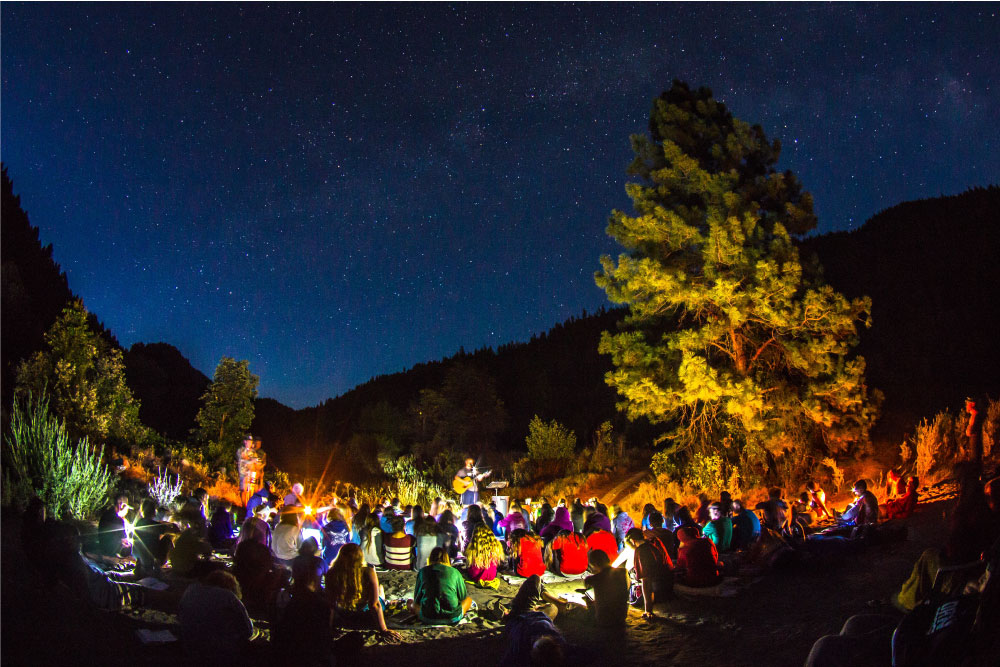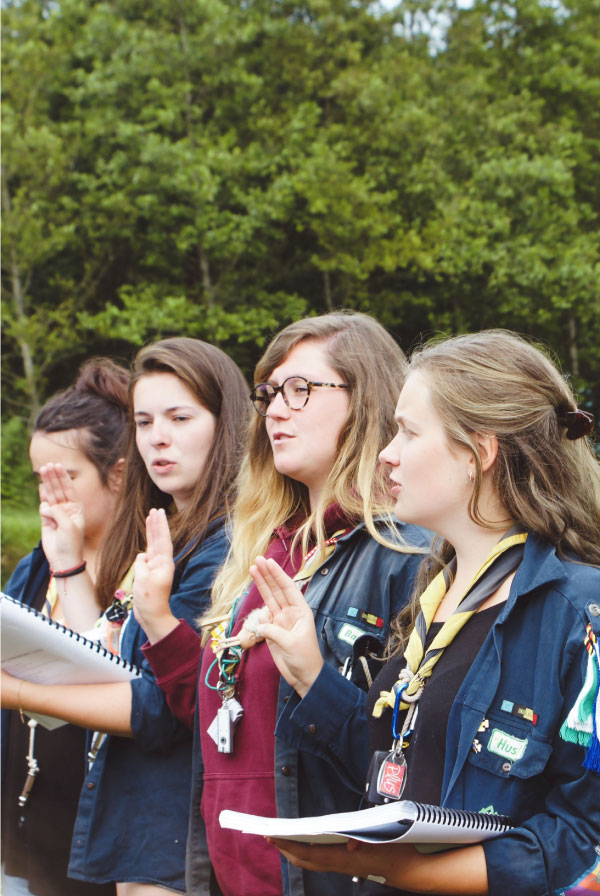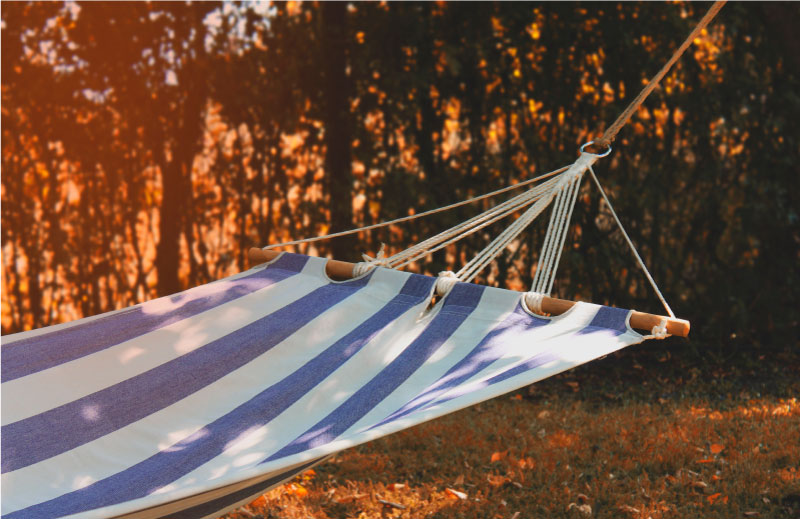Any camp director knows that summer camp isn’t just a summertime responsibility – even if people you’ve just met seem to tune out everything after “summer”. In fact, running a summer camp is less of a profession and more of a full-time lifestyle. That means an entire year of planning, prepping, marketing, organizing, dotting i’s and crossing t’s.

Without a doubt, the more you put into it now, the more prepared you’ll be when summer comes around. So what are the best ways to get ready for summer camp?
We’ve put together an off-season checklist for summer camp to help you maximize your time so that this summer is a memorable one for campers…and one that goes smoothly for you.
Here are the top things to do before summer camp starts:
GEEK OUT AND CRUNCH SOME DATA [JUST FOR A MINUTE!]
Pull statistics from your website, read through the surveys and the feedback you collected after last summer, and root out areas in which you might be able to improve. Take a look at our North American Summer Camp Trends Survey to see how you campare to other camps. And if you don’t have access to your data or weren’t pleased with your feedback collection process – or don’t have one at all, now is also the perfect time to streamline and improve it for your camp. So sit down with a cup of tea—make it a pot—and sift through what was working and what improvements your staff and campers suggested. Then, with those ideas fresh on your mind, you’re ready to get your brainstorm on.
‘TIS THE SEASON FOR BRAINSTORMING
Chances are you’ve got a long list of ideas for improvements all over your camp, from facilities to living areas and new programs to try. First, put down all your ideas on paper. Then, spend a chunk of dedicated time adding to the list.
After you let the creative juices flow, take a step back and see which items on the list you want to prioritize, and how you can get there. If you need to order any special equipment to accomplish goals on the list, make a note of it and put it on your checklist.
Get your maintenance team on board and get started!
GET TO KNOW YOUR CAMPERS
If you can, take the time to get to know each of your campers and their expectations before they show up. A simple half hour Skype call can help you understand what they want to do at camp, and who might make perfect bunkmates.
Alternately, send out a pre-survey for campers. Learning as much as you can about who they are and what they expect out of an awesome summer at camp can help you customize it and provide it to them when they arrive.
STAY RELEVANT
In the 60’s and the 80’s, campers loved learning to square dance. Gen-Z? Not as much. Take some time to plug into what campers are interested in, and what they face in their daily lives.
Challenge yourself to watch a movie you might otherwise never watch. Research the latest trends and fashions among the ages you accommodate at camp.
EVOLVE YOUR PROGRAMS
The off-season is the perfect time to evolve the experiences and programs that you offer at camp. For example, maybe one year kids worked on creating a recording studio for their very own album; now you have a recording studio, outfitted with the works.
How you can evolve that experience? Why stop with music recording when you could turn it into an entire communications program?
You can never sit still with the resources you have…after all kids sure don’t!
BUILD YOUR DREAM TEAM
Every summer is different: it’s who you hire. When you’re thinking about how to get ready for summer camp, this is one of the biggest items on the list. To break it down into smaller steps:
- First and foremost, welcome back the staff who would love to return and you’d love to have back. Once you know what holes you’re trying to fill, you can start your search in earnest.
- Look for staff that kids are really going to relate to and look up to. Young adults and teens look to staff and counselors as role models, especially when they have skills, experiences, and passions similar to their own.
- Round out the types of staff in each program. In an art studio, it’s great to have a highly skilled director to hold down the fort—and it’s also nice to add a more creative, experimental staffer to the team. A spectrum of possibilities helps more campers relate.
- Diversify your staff. When you add diversity to your staff roles, kids have a broader range of people they can connect to. Scrutinize parts of your camp that feel homogenous and see how you can broaden the horizons for the campers when you’re hiring.
- Lastly, consider this tip from a camp director as you’re selecting candidates:
Question if the staff are in it for the right reasons. Someone who wants to come make a lasting difference in the lives of children will have way more to offer to you and campers than someone who is in it for selfish reasons.
WORK ON YOUR RECRUITMENT RELATIONSHIPS
Now you know what holes to fill, start reaching out or reignite conversations with sources of amazing counselors and staffers.
Schools are one of the top resources to find faculty and counselors. If you run an art camp, reach out to top universities with overlapping interests in your area and beyond, including institutions like Berklee, RISD, MICA.
Job fairs and conferences for camps are another great way to get in touch with the people who are looking for jobs this summer. Plus, it can be a great excuse to travel and shake up your regular routine during the off-season.
Lastly, let the people you’ve already hired know what you’re looking for and they can help you recruit. Staff that are passionate about your camp and the work you do often know others who fit the bill.
MAKE YOUR LEGAL CHECKLIST (And check it twice!)
One of the most important off-season tasks for camp directors is getting all of the legal items squared away. Here are a few of the things that should be on every camp director’s checklist as summer approaches.
- Get your annual director’s license.
- Every fifth year, be sure to get your American Campers Association Accreditation. While you’re at it, brush up on their guidelines—they’re detail oriented and designed to be easy to use. From evaluation tools to camp marketing tips, the ACA has great resources you can add to your toolbox.
- Make sure your insurance is up to snuff.
- Make sure your staff has the certifications they need. Like for example, to let a group of adolescents use primitive weapons of war to shoot arrows across a field. Hypothetically speaking of course. Did we already mention insurance?
As long as you get your list in order with plenty of time to spare, you can pace yourself as you complete everything to ensure summer camp is safe for everyone to enjoy!
PUT YOUR EQUIPMENT IN ORDER — AND ORDER YOUR NEW EQUIPMENT
Make sure all the equipment is in fine working order so that everyone who uses it can be happy, healthy, and safe. The sooner you can check this item off the list, the sooner you can rest easy knowing it has been taken care of.
Plus, if you need to replace anything, ordering it ahead of time can save you stress down the road.
MARKET YOUR CAMP
Did you get new photo/video content from last summer? Get it up live for the world to see on your website. While you’re there, see if you can update your website with fresh testimonials.
Consider the broader picture of your online presence: is your website structured to be inviting and easy to use? Making plans to streamline your web experience repays you with every camper that visits.
Tune up your social channels. Make a plan for how you want to run them during the summer. (Who has the logins, who is posting content? What role do phones/cameras play on premise?)
Take a look at How to Use Facebook and Instagram for your Summer Camp.
Finally, do you have a program to reach out to last year’s campers? Encourage return visitors by getting in touch via postcard, email, or messenger pigeon. (Wait, your camp doesn’t have a messenger pigeon program?)
Get more ideas here: 12 Ways to De-Mystify Marketing
MENU PLANNING
If you’re anything like us, you’re planning lunch while you’re eating breakfast. Here are a few objectives to keep in mind as you start filling up your meal plan.
- Healthy – Break out the fruits and veggies, limit the unhealthy foods, and get ready to sing, “Beans, beans the magical fruit…” Here’s “How to Make Sure You Provide a Healthy Summer Camp Diet”
- Brush up on Four Common Dietary Restrictions and how to accommodate them.
- Fun + different — Choose a few special meals that involve kids in the process of making their dinner. But move aside, popcorn, here are a few fun ideas for campfire meals.
START THINKING GREEN
The past year has been one of intensifying activism for young people around the globe as they strike to support climate and the environment. Where better to support this movement than at camp, where kids can disconnect from tech and plug in to nature?
By focusing on this issue as a community, the work feels more meaningful and more effective. Plan some activities around this hot topic that will encourage and empower your campers.
Here are a few ideas on how to address climate change at camp:
- Plan a discussion about the climate and ways young people can make a difference. (Don’t forget to cover how those in older generations can support them! The onus should not be left entirely to young people, it is too much to bear.)
- Discuss how legislation works to protect the environment. You could even write letters to your local representatives as a group.
- Plant a bee garden to encourage pollinators to come to camp, too!
- Have a camp clean up day, or sign up for a nature clean up in your area.
HONE YOUR PHILOSOPHY
It’s the perfect time of year to pick up those books that you’ve been meaning to read. By crossing the below books off your reading list, you can get new ideas and sharpen your approach to directing a summer camp.
- Raising Cain by Michael Thompson – (Nonfiction) Two psychologists offer their experiences working with young boys and their families, making the argument that emotional literacy is the best tool adults and leaders can offer boys and young men.
- Homesick and Happy: How Time Away from Parents Can Help a Child Grow by Michael Thompson – (Nonfiction) This book makes a case for and highlights the strong points of summer camps. It also provides guidance to parents on how to approach the temporary loosening of connection with their child, and trusting that it will result in incredible growth for their child.
- The Blessing of a Skinned Knee by Wendy Mogel, PhD – (Nonfiction) This New York Times Best-seller offers insight and techniques for the day-to-day challenge of raising self-reliant children.
- The Interestings by Meg Wolitzer; (Fiction) Mix up your reading with some fiction, with a novel that focuses on the evolution of the deep connections and passions forged in a summer camp and carried into life far beyond.
Book list too long already? Look for different approaches to teaching kids, like those used in Montessori schools.
For a more engaging session of discussion, you could attend the 2020 ACA Conference in San Diego this February. Meet others in the summer camp field and learn as much as you can in person. https://www.acacamps.org/conference?utm_source=home&utm_medium=banner&utm_campaign=conference
REJUVENATE DURING THE YEAR
And most importantly, use the time “off” to rest up, and prepare yourself physically and mentally for the intense summer that is to come.
Don’t forget to take a break! Do something you love, and spend time with the people you love. After all, taking care of yourself mentally and emotionally doesn’t just benefit you, but your entire camp.
THERE’S STILL PLENTY OF TIME
Yes, summer is coming. But the fact that you’re even reading this article means you’re already ahead of the curve to prepare for summer camp. Best of luck getting ready for next summer, don’t forget to take care of number one!









